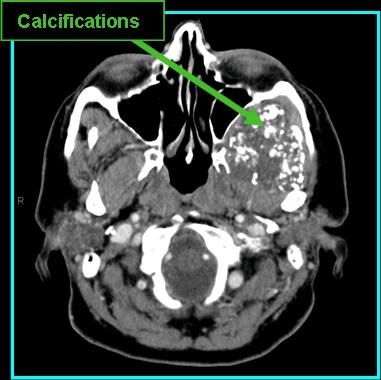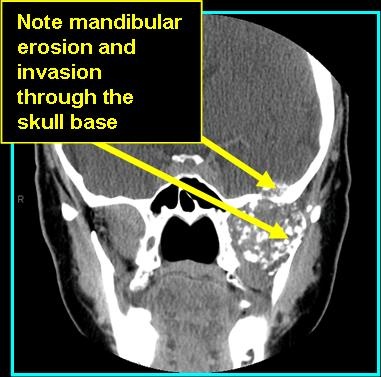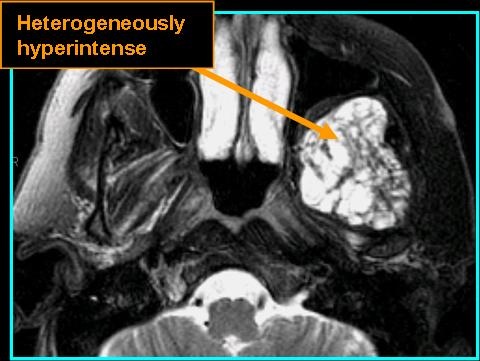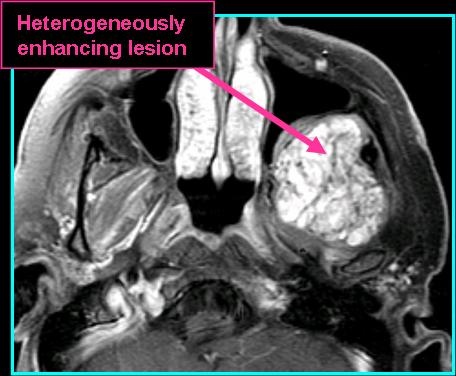Overview
- A malignant tumor of the cartilage
- Most often seen as a mass of soft tissue with varying degrees of calcification, indistiguishable border with the bone of origin
- Often greater than 4 cm at presentation (Limaiem et al. 2023)
- Most cases are sporadic, most commonly seen above the age of 50 years (Limaiem et al. 2023).
- The second most common bony malignancy (Weinschenk et al. 2021 and Chow 2018).
- Late-recurrences not uncommon; histological grade is the most important predictor (Limaiem et al. 2023)
Radiologic Findings
- On CT:
- Non-contrast erosion of surrounding bone, ringed or crescent calcification in low grade lesions, amorphous calcification in high grade
- Contrast shows heterogenous enhancement, ill-defined boders
- On MR:
- T1 shows homogenous isointense signal, bone invasion is well-noted as well as marrow replacement
- T2 shows high signal with possible surrounding edema
- T1 post-contrast shows varying enhancement, more with higher grade lesion




References
Limaiem F, Davis DD, Sticco KL. Chondrosarcoma. [Updated 2023 Aug 14]. In: StatPearls [Internet]. Treasure Island (FL): StatPearls Publishing; 2023 Jan-. Available from: https://www.ncbi.nlm.nih.gov/books/NBK38132/
Weinschenk RC, Wang WL, Lewis VO. Chondrosarcoma. J Am Acad Orthop Surg. 2021;29(13):553-562. doi:10.5435/JAAOS-D-20-01188
Chow WA. Chondrosarcoma: biology, genetics, and epigenetics. F1000Res. 2018;7:F1000 Faculty Rev-1826. Published 2018 Nov 20. doi:10.12688/f1000research.15953.1